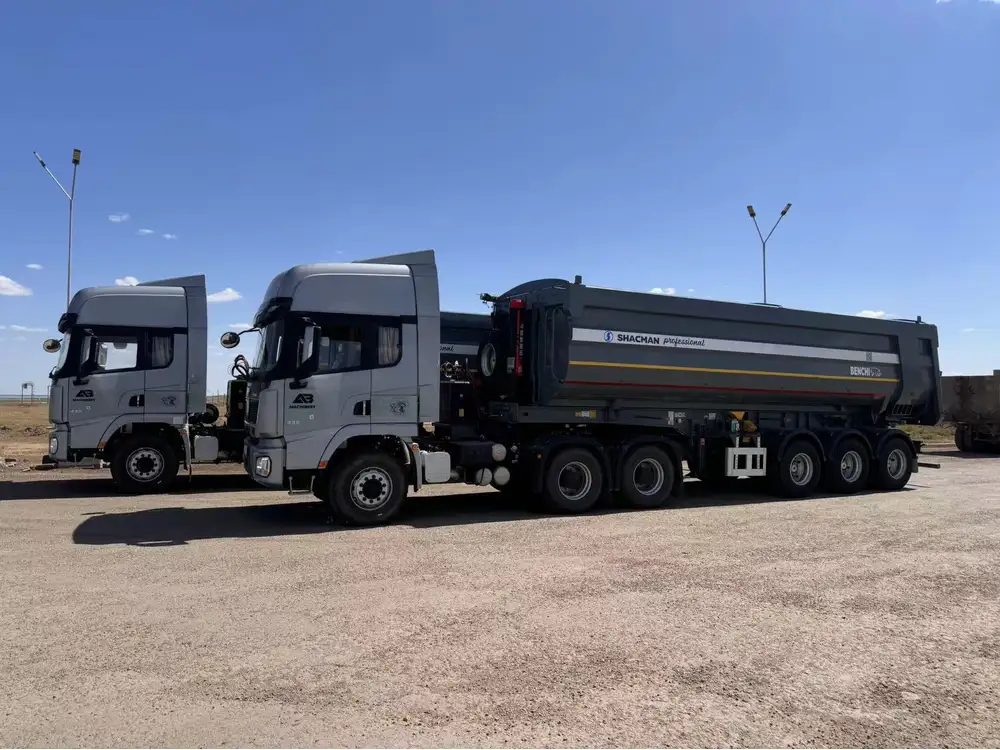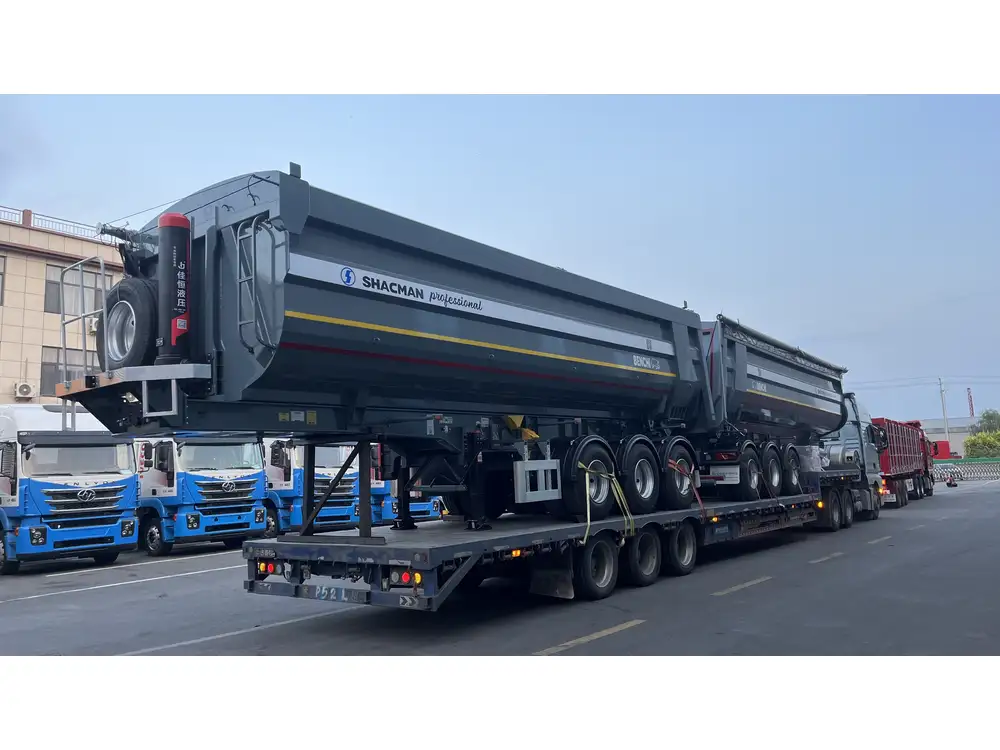Dumping air bags on a semi-trailer is a procedure that, while seemingly straightforward, requires a thorough understanding of the air suspension system, its components, and proper techniques to ensure safety and efficiency. This article will delve into the details of the air suspension system, the purpose of air bags in semi-trailers, and the steps involved in dumping them effectively. We will also address potential complications and maintenance tips to enhance longevity and performance.
Understanding Air Suspension Systems
Air suspension systems are designed to improve the ride quality of vehicles like semi-trailers. Comprising several components, including air bags, compressors, and control valves, this system maintains optimal ride height and accommodates variable loads.
| Component | Function |
|---|---|
| Air Bags | Provide cushioning and support, adapting to load changes |
| Compressor | Fills the air bags with compressed air |
| Control Valve | Regulates air flow into and out of the air bags |
| Height Sensors | Monitor and adjust the suspension height automatically |
Benefits of Air Suspension
- Enhanced Comfort: Air bags adjust dynamically to load, offering a smoother ride.
- Reduced Wear: Improved shock absorption leads to less strain on tires and the trailer frame.
- Load Management: Air suspension can automatically adjust to maintain optimal load distribution.

Step-by-Step Guide to Dumping Air Bags
1. Preparation
Before beginning the process of dumping air bags, certain preparations are necessary to ensure safety and efficiency:
- Safety Gear: Wear appropriate personal protective equipment (PPE) including gloves, safety glasses, and steel-toed boots.
- Environment: Work on a stable, flat surface to prevent the trailer from rolling or shifting unexpectedly.
- Vehicle Inspection: Check for any visible damage to the air suspension system, including cracks or leaks in the air bags.
2. Locate the Control Valve
The control valve is typically mounted near the air bags or along the frame of the semi-trailer. This valve is responsible for regulating the flow of air into and out of the air bags.
- Identify the Valve: It may have colored hoses leading to each air bag.
- Confirm Functionality: Make sure the control valve is operable and not obstructed.

3. Dumping the Air Bags
Once the area is prepared and the control valve is identified, the following steps detail the process for dumping the air bags:
Mechanically Controlled Systems
- Locate the Dump Valve: This may be a manual lever or electronic switch within the cab.
- Activate the Dump Feature:
- For manual systems, pull the lever to open the valve.
- For electronic systems, press the corresponding button on the dashboard.
- Observe the Air Bags: Watch as the air bags deflate, lowering the suspension to its dump position.
Electronically Controlled Systems
- Prepare the Vehicle: Ensure that the vehicle is in the park position with the brakes set.
- Access the Control Panel: Typically found in the cab, the control panel allows you to adjust the air suspension.
- Select the Dump Option: Activate the command to release air, monitoring the process until the desired height is reached.

4. Confirm the Dump
After initiating the dump:
- Visual Inspection: Confirm that the air bags are fully deflated and the trailer is lowered.
- Height Measurement: Use a measuring tool to check the height against manufacturer specifications.
- Hand Operation: Some systems may require a manual override to complete the process.
Potential Complications
While the process of dumping air bags is relatively straightforward, several complications may arise. Awareness of these can prevent costly repairs or accidents.
- Air Leaks: A common issue, often indicated by a slow deflation of air bags. Inspect connections and air lines for signs of wear.
- Faulty Control Valve: If the dump function doesn’t engage, the control valve may be jammed or defective.
- Obstacle Clearance: Ensure the trailer is clear of any obstacles that may cause damage during the dump process.
Maintenance Tips for Air Suspension Systems
Regular maintenance is critical to prolonging the life of an air suspension system. Here are several essential maintenance tips:

1. Routine Inspections
Conduct periodic checks of all components related to the air suspension system.
- Air Bags: Look for signs of wear, cracking, or bulging.
- Air Lines: Check for leaks or abrasions.
- Control Valve: Ensure smooth operation without obstructions.
2. Clean and Lubricate
Keep the control valve and air lines clean. Lubrication can prevent rust and enhance functionality.
- Avoid Corrosive Materials: Clean with approved products to avoid damage.
- Regular Application: Lubricate fittings as needed to ensure they remain operational.
3. Monitor Air Pressure
Use a pressure gauge to check the air bags’ pressure levels regularly, ensuring that they meet manufacturer specifications for optimal performance.

4. Check for Alignment
Misalignment can lead to premature wear. Every few months, confirm that the semi-trailer maintains proper alignment, especially after servicing.
5. Professional Servicing
Schedule professional servicing annually or bi-annually. Technicians can provide insights and perform deeper maintenance that may not be feasible for self-servicing.
Conclusion
Understanding how to dump air bags on semi-trailers is crucial for effectively maintaining vehicle handling and performance. By following the detailed steps outlined in this guide, operators can ensure that the process is executed safely and efficiently. Furthermore, addressing potential complications and adhering to a routine maintenance schedule will help prolong the lifespan of the air suspension system. In summary, knowledge and proactive care are essential to maximizing the performance of your semi-trailer and ensuring a smooth, safe ride under varying load conditions.
Maintaining the integrity of your air suspension system not only enhances the ride quality but also contributes to operational efficiency and safety. Equip yourself with this knowledge, and your semi-trailer will function optimally for years to come.



